Often I see pictures, or catch snippets of a conversation that lead me to a subject that I want to write about in my blog.
Todays offering is about old Park Street, Weymouth after seeing a fantastic photo of the street taken back in the early 20th c on a FB website I frequent, You’re Over 30 and Come from Weymouth. (A great source of information, photos and illustrations, both historical and present day…used with the owners permission of course!)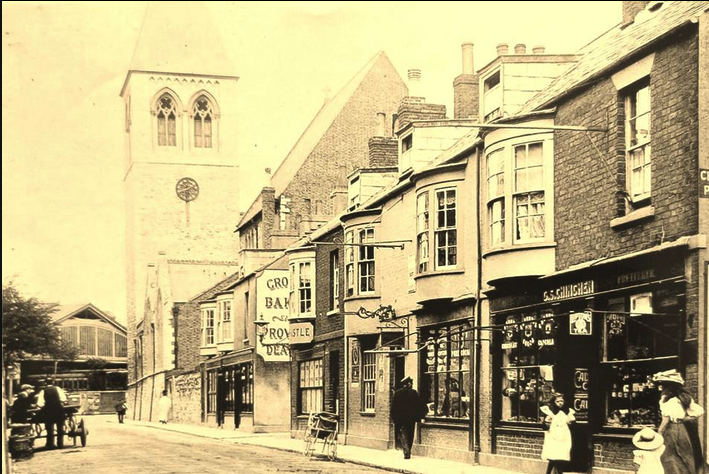
This picture was taken looking down towards the large stone edifice and tower on the right hand corner, what was once Christ Church.
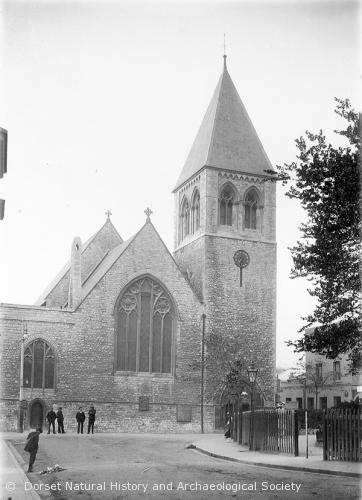
This great stone building was erected in 1847 as a chapel-of-ease to St Mary’s in town.
It was closed in 1939 because the Rector of the time, Rev E L Langston had been left struggling to run both churches and he could no longer continue doing so. Also, with war looming, the good Rev stated that as the huge church had so many windows it would have been impossible to black them all out…so there it stood, empty, its fate to be decided if it survived the war.
As it so happens, it became a veritable place of sanctuary in the wartime, within its walls were the men and women who looked after Weymouth’s residents, it became a Nookery Cook, where those in need could get a decent hot meal for a reasonable price.
(They obviously had no problems in blacking the windows out!) By 1941 all the church contents, pews, woodwork etc had been given to the newly built St Aldham’s church at Radipole.
Right at the end of the street stood Weymouth’s original railway station opened in 1857, designed by T H Bertram, one of Brunel’s assistants.
Many of those large old buildings now gone, the church demolished, the old Brunel style railway station redesigned and rebuilt for the 20th c commuter,

but a lot of the original Victorian terraced shops and houses remain, you can still spot the odd attractive bow windows and old shop fronts, you just have to look behind the modern day facades.
I shall take you for a nostalgic stroll down what was once a very well-heeled and extremely busy street, bustling with numerous shops, businesses and public houses. The main fairway for most of the thousands of Victorian train travellers into and out of the town.
The year is 1901, betwixt Victoria’s rule, (she died in the January,) and that of her son Edward, who succeeded her.
It is hard to match exactly the house numbers with those of todays because so much has changed, some buildings demolished, new ones added, but where I can do so with certainty I will attempt to.
*********************
no 1 Park Street was the home of 36-year-old Elizabeth Alice Butler, a shop keeper. She ran the local greengrocers store, and took care of her family, sons Alfred Vernon and John Albert and daughters Evelyn Gladys and Florence, or Flossie as she was better known. To help her run the business and take care of the children was Florence Bartlett, one of her extended family, as Elizabeth had been a Bartlett before her wedding to husband Alfred.
****************************
Those living at no 2 were the members of the Dovey family.
The building originally belonged to London born Joseph Dovey, a confectioner and baker, and his wife Mary Ann. They ran their business from the premises. Joseph died in 1900.
Taking over his fathers role, under the watchful eyes of his mother, by the 1901 census was son 24-year-old Frank, who was living (or lodging as the poll book says) in the lower half of the house, occupying rooms on the first and second floor. He was an active member of many of the local clubs and societies. One of his passions was amateur dramatics, especially musicals, becoming a member of the Weymouth White Star Minstrels. In 1899 they were appearing at St Mary’s School hall, where Frank played the character Bones. He was not beyond a spot of theatrical cross dressing either…having played widow Mrs Grey in the sketch ‘The Hypochondriac Secretary.”
Another favoured past time was bicycling, and as a young lad he had joined the Weymouth Bicycle Club, which oddly enough I had only written about in my last post. ( https://susanhogben.wordpress.com/2014/06/25/victorian-weymouth-bicycle-club/) Joseph is even mentioned briefly as one of the young men who gave a demonstration of trick cycling.
Funny how things link up unintentionally sometimes.
Also living and working at the bakery premises were the rest of the Dovey clan, Frances and Laura Eunice, and two single men who were employed by the family, Charles James Hazell and Ernest Stickland.
***************************
Moving onto no.3, here we find the home of the Atkins family, but with another link to the Bartletts. Head of the family 47-year-old Samuel has Bartlett as his middle name, a baker by trade. Living with him were his wife Louisa, and their four children, 16-year-old William Arthur, 14-year-old Jessie, Lillie aged 9 and Florrie aged 8.
The family took in lodgers, a necessity to eke out the money.
****************************
The house of 4 Park Street contained the Emes family, James and his wife Ellen. James, Devon born, moved down this way to work. His occupation? A clothier. With them were their 4 children, Elsie Gertrude, Hilda May, Mabel Evelyn and Leonard.
****************************
5 Park Street was the domaine of the Mayne family, 48-year-old Henry and his wife Sarah Ann. The Maynes owned and ran a grocery business alongside that of a milkman.
Two of their adult children lived at home in 1901, Matilda and Ernest.

I found an incredible photo of Henry on one of the Ancestry trees with what looks like the very well-fed family cat. He’s stood outside his grocery shop in Park Street taken a little later.
By then they had moved into the premises of no 4.
Thank you to Julie for letting me post it on here.
******************************
At the time of the 1901 census, the house of no.6 was stood empty, but dairyman Frederick William Gould was on the electoral lists as its owner.
***************************
We arrive at the home of the Bartlett’s, who live at no.7. This is the house of Thomas George Bartlett, aged 37 and runs his own plumbing and glazier business from the house. With him are wife, Elizabeth (also 37,) and five of their children. Edith, Albert, Ernest, Cecil and Harold.
Thomas was another Weymouth resident who liked to take part in Weymouth’s social activities. He was a member of Weymouth Bicycle Club, along with his neighbour Joseph Dovey. Thomas is actually in the photo of the cycling post mentioned above, stood proudly by their machines in front of the Kings statue. According to the report of the time (June 1884,) these men had cycled all the way from Deptford, London to Weymouth, no mean feat on those dangerous, dodgy old boneshakers!
***********************
A retired hairdresser lived at no 8, aged 48. Either he had already made his money, or suffered health problems.
This was James Harrington Williams, living there with his wife Agnes, who contributed to the household pot as a dressmaker, along with their daughter 24-year-old Alice, a teacher of music.
James died only 3 years later, aged 50.
**************************
Living at no 9 was James’s elder brother, Charles Richard Williams, a baker by trade. Residing with him were his wife Ellen and grown up son Charles Richard jnr, a minister and schoolmaster.
Like his brother James, Richard wasn’t destined to make old bones. He died in 1906, aged just 56.
************************
Seventy-two-year old widow, Elizabeth Ann Gale lived at no 10. Married to George Gale until his death. Now living with her was her unmarried daughter Ellen, aged 36.
Living with them was Eliza Atkins, another widowed lady of a ripe old age.
***************************
Next on the street is one of the many public houses, nos. 11&12 Park Street and the Prince of Wales public house. This watering hole stood on the corner of Park Street and Bath Street.
Mine host at the time of 1901 was 38-year-old Charles Joseph Stone. A carpenter and builder by trade, but the family had taken over the pub some years earlier. His wife Charlotte served behind the bar, as well as taking care of their family, Not long after the census details were taken, later that year Charles decided that the licensed victualler trade wasn’t for them any more and the Prince of Wales pub was transferred to Frederick Meech.
Sadly, Charles lost his wife Charlotte, and by the time of the next census he has moved from Park Street and is living with his widowed mother and children, working in his own building business.
**************************
Cross over Bath Street, and right on the opposite corner stands The Duke of Albany public house, at no 13 & 14 Park Street.
In 1901 this was run by Surrey born Thomas and his wife, local born girl Mary Ann Masters, (Watts.) They were in the first flush of their marriage, in their 30’s with a young family, Alfred and Reginald.
Also living and working in the business was 25-year-old Bessie Watts, she was the younger sister of Mary Ann. But like many publicans, they moved on after a while, the next census sees the family living and running a pub in Bridport.
**************************
Stood next door to the pub was a hairdressers. No. 15 was the salon of Londoner Thomas Reed. Originally working and training with London hairdresser Louis Jacob, he moved down South in the early 1890’s to start his own business. Here he had met and married his wife, Ellen, and they were quite happy raising their brood in the busy seaside town. However, the hair dressing business couldn’t have been that brisk for the Reed family, because by the time of the next census,(1911) they had changed their premises to a newsagents.
**************************
16 Park Street was a house of multiple occupancy.
There was 39-year-old Harry Howard Bishop and his wife Louisa (nee Mayne) with two children, Charles and Rose. Harry was working as a verger at the local church, but in his former life he had been a ships steward on board HM Duke of Wellington. The couple had married in 1887 at Christ church just down on the corner, and presumably this is where Harry was now verger.
Not long after this census the Bishop family moved to dwellings in Bath Street.
Also living on the premises was 69-year-old Margaret Stroud, a widow from Ireland, who lived with her married daughter, Margaret Leahy and grand daughter, 8-year-old Rose.
In 1891 Margaret senior had been running the Railway Tavern public house, along with her 3 daughters, Jane, Eliza and Margaret. She was no stranger to the life of a publican, before she became a proper licensed victualler, she ran a beer house in Wesley Street. Beer houses popped up everywhere when the Government in their infinite wisdom had loosened licensing laws. They were working on the slightly dodgy assumption that if beer was cheaper and more available, then the working man was less likely to get drunk on hard spirits…consequently any Tom Dick or Harry, (or Margaret,) could apply for a license to brew beer and open a beer house on their own premises for a couple of quid! It was one way that a widow could earn an income from home while looking after her family, and as Margaret had lost her husband, an ex-soldier, early, it had been vital to keep the wolf from the door.
***************************
Two spinsters lived at no. 18. The Oliver sisters, Mary Ann (aged 44,) and her younger sibling, Frances (at a mere 41.) They were general shop keepers who ran a business from their home address.
By the time of the next census, Frances was still living at no 18, but the head of the household was another single lady, 53-year-old Elizabeth White. Both were listed as dressmakers.
What of Mary Ann? Well,…she upped and got married!
At the ripe old age of 52, Mary Ann found herself a husband, Edwin Richard Charles, local boot manufacturer and dealer with a nice house on Dorchester Road.
You go Mary Ann….
**********************
Their neighbours (19) were the England family, William Robert and Ellen who had moved up from Devon. William was a confectioner running his own business, their 10-year-old son Frank had been born in Weymouth.
By the time of the next census the family were still living and working at no.19 as confectioners, Frank following in his Dads footsteps.
***********************
The Riggs resided at no. 20. Husband and wife, John and Sarah, along with their adult children, Lilian, Masie, Herbert and Arthur, they ran the local greengrocers shop.
John is still living at no 20 and running the family shop by the time of the 1911 census, Sarah had died, so helping Dad out in the store is 31-year-old Minnie.
*************************
Next door to the Riggs lived the Martins, (no.21.) Not long since moved here from Edward Street. Dad, 39-year-old William Samuel, was a tailor working from home, Mum, Elizabeth, was also aged 39. With them was their sizeable brood, Henry, Lilian, Adelaide, Alfred, Reginald, Hilda and baby of the family 4-year-old Myrtle.
As befitted their status as a business class family, they could boast a personal servant, young Nellie Thresher.
The family are still at no.21 ten years later…all 7 of them!
The eldest son, Henry, by now aged 27, had followed in his Dads footsteps and working in the family firm. Adelaide was working as a shop assistant in the confectioners shop. Alfred a cobbler and Reginald a clerk in the nearby motor works.
*************************
Moving swiftly along to the home of no.22, 47-year-old Simon John Rabjohns Lock was the master of the house. Simon traded a monumental stonemason, running his own business, as had his father been before him. Along side him was his wife, Ann, and three of their children, 19-year-old Helen, 17-year-old Frederick, an apprentice to his father, and Ethel aged 14.
But this wasn’t just a private house, it was also a licensed premises, the Dolphin Inn, It had been their home for at least 10 years.
Simon outlived his wife, she died in 1906.
By 1911 Simon was still at the Dolphin Inn, along with two of his unmarried daughters.
**************************
Over the road from the pub stood the butchers shop at no. 23. This was owned and run by the Bazell family. Weymouth born 44-year-old Henry and his wife Elizabeth Annie (nee Woodland.) This couple also boasted veritable brood, 7 of whom were living with them in 1901. Charles Henry, Florence Annie, Beatrice Eleanor, Thomas Woodland, Reginald John, George, and bringing up the rear, Walter Lindley. There was another on the way, soon to be born Arthur William.
Previously the family had lived at no.18 Park Street.
By 1911 they had upped sticks again, having moved lock stock and sausage barrel to Crescent Street, along with 5 of their 8 children who were still living at home. Their twenty-one-year old son Thomas was now working as a coppersmith at the newly constructed Whitehead’s torpedo works, which had somehow enabled a couple of his work colleagues to weedle their way into the already crowded house.
Things never change do they?
************************
Of course, next to the butchers what else could there be but a bakers.
no.24 was home to James and Eliza Thompson, (nee Atkins.) Only a young couple, but already James was running his own bakery business. When not helping out in the shop, Eliza was kept busy looking after their firstborn son, Leslie.
****************************
A stables sat between the bakers and the next dwelling.
*************************
Not quite a candle stick maker but close…jewellers and watch repairers occupied the premises of no. 25. Here lived a fine fellow with a fine name, Cockney lad, William Augustus Weygang.
William moved down from London to work as an apprentice at the business of German watch maker Herman Jatnez based at 77, St Thomas Street. William lived above the business with the family, Herman and his wife, Johanne, had taken him under their wings. As Williams parents had both been German, presumably there had been some sort of family connection there.
While here William met and fell in love with a young lass, Louisa Maria Shoobert, another Londoner, despite having their banns called in Weymouth’s Christ Church, they got married in East Brixton, London in 1892.
By 1901 the couple set up their own jewellers business in Park Street, and had two children living with them, 7-year-old Meta, and George Edward aged 4.
They appear in the records for Park Street, Weymouth right up until 1907.

(1904 advert from Southern Times and Dorset County Herald)
Then the family seem to split apart when rather oddly only William and his young son George leave these shores on board the vessel Geelong, heading for a life in Sydney Australia!
George obviously went on to live there, we can follow him in the electoral rolls, but William Augustus died in 1916 in Melbourne.
Whereas his 17-year-old daughter Meta and wife Louisa are both back working in London by the 1911 census. For some reason they did not follow father and son to the other side of the world.
***********************
A bit like the marriage of William and Louisa, the house next door to them stood empty, so we’ll move on to no 27.
Here lived widow, 60-year-old Jane Orchard, a Yorkshire lass, along with her 15-year-old servant Mabel. Jane had resided in Park Street for many years, and was married to George, a gardener until his death in 1883.
Now Jane had to earn her own living, which she did as a dressmaker until her own death in 1914 aged 75.
***************************
No 28 was the home of the Stoodleys. Husband and wife, Robert Morgan and Ellen weren’t exactly in the first flush of youth, but the couple managed their business, bootmakers, alongside that of a provisions dealer.
They too had lived in Park Street for some time. Robert died there in 1911.
Though the couple never had any children of their own, they did have a house full of relatives. Living with them was their nephew, 26-year-old James Hampton, his wife Edith along with their 5 month old daughter, as was the practise of the day, also named Edith. James worked as a cycle agent.
Also living with the Stoodley’s was Morton Britton, another Londoner, 53, single and a glass dealer.
The third family living at no 28 were the Coakers, London born Edward and Eva who was Welsh.
************************
Weymouth certainly was a mixing pot, even in those days.
Widower, 36-year-old Francis Curtis, was head of the household of no. 29. By 1901 Francis set himself up in business as Park Street’s fish dealer.
Living on the premises were the Clark family from Somerset. Dad, Samuel Robert Clark, a carpenter, Mum, Annie, and their three children, Richard Alfred, Ellen Mercy and Alfred Thomas, who by then were adults really, not children. The two lads had followed in their fathers footsteps and were joiners in their fathers business.
By the 1911 census, the Clark family had moved to Abbotsbury Road, that was the ENTIRE family…none of the children had left home or married. Samuel was running a building firm, and his sons had changed careers, they were now trained as electricians.
************************
Step next door (30) into the home of the disappearing Rimmerpate (?) family, with Dad, 55-year-old Frank at its helm. Mysterious Frank was born Bridlington, Yorkshire, and an army pensioner. This is confirmed by the fact that his eldest daughter Elizabeth was born in Chelsea Barracks. He had two other children, 14-year-old Weymouth born James and Florence who was 10 born Sutton Poyntz.
Could be that Frank had been with the Coastal Garrison artillery, and moved down to Weymouth as a posting until his time with the army ran out.
In the 1891 census, the enumerator has pencilled in beneath this address ‘The Friendship Inn,’
This family are somewhat of a mystery though….
Apart from the fact that the census enumerator’s writing is atrocious, I simply cannot find any trace whatsoever of this family anywhere else, no births, marriages, census etc…..maybe my reading of the name Rimmerpate is incorrect.
If you should happen to be reading this blog, and the family jumps out you as one of yours, please, please, please let me know…they have cost me an afternoon of head-scratching and a sleepless night.
***************************
At least the Fredericks next door were easier to read and trace!
31 Park Street was the domain of the Jolliffe family. Thirty two-year-old Frederick William and his wife Annie Louise,(nee Ozzard,) aged 25, were the sole occupants of the house. He was working as a store keeper for the Corporation. They had only been married for a year, and Annie’s Dad, Daniel Ozzard, had given her away.
Wonder if he brought them good luck?…he was a chimney sweep.
But maybe not…by the time of the next census they had seemingly gone down in the world having moved to the notorious Burdon Buildings in Bond street.
*************************
Walter and Elizabeth Banks Jerrard lived in no. 32.
They ran a well established Weymouth business. Seventy-year-old Walter was a hair cutter and had been one for …well, you could say a fair few years. The couple lived and worked from these premises in 1901, going back to 1891, 1881, even 1871, and then back again to 1861.
Before then (1851) Walter had been coiffing ladies and mens hair in his Dads, Matthew Jerrad’s, hair salon in Bond Street.
Walter had probably been working with hair ever since he had been knee high to the salon chair.
The couple finally retired by the time of the 1911 census because Walter and Elizabeth moved up to London of all places, both in their late 70’s by now.
I think they certainly deserved a bit of R&R.
Walter died on the 11th July, 1915 aged 84, and left a tidy sum to his two sons, Albert and Alfred.
************************
His neighbour John Charles Chaddock could only watch and dream that his business would be as successful, long lasting and profitable as that of his elderly friend. He had a few years to go, but wasn’t doing too bad.
John and his wife Emily ran a groceries and provisions shop at the premises of no. 33. Living and working with them was their 20-year-old daughter Kate. They too had been residents in the street for at least 20 years.
The family were still there in the 1911 census, by now daughter Kate had been trained as a piano forte teacher.
By the time of John’s passing, September 28th 1922, the couple were still residents of the street.
**************************
Aptly named Alfred John Bunn and wife Elizabeth Jane (nee Marsh,) lived at no. 34. Not surprisingly, with a surname like that, Alfred was a baker by trade, and of course the name Bunn’s became synonymous with bakery in Weymouth.
Ten years earlier, in their 40’s the couple had started out their business at no 2 Park Street, as bakers and grocers.
Previous to that they had lived at Chapelhay where Alfred was the manager of the bottled mineral works. Well, he’d obviously decided he wanted more out of life, and to run his own business instead of dancing to the tune of others.
Consequently Alfred and Elizabeth simply upped sticks and moved to the other side of the harbour and into prosperous Park Street, where they opened their very own shop. Despite having worked at times as a porter and business manager, Alfred was already a qualified baker, as that had been his original trade.
Rather oddly, by the time of the 1911 census, the couple moved again, this time to 15 West Parade, but 62-year-old Alfred is now running his own gardening business!
Obviously a man of many talents.
Their premises in Park Street were now the home of their son William Winzer Bunn.
******************************
A provisions dealer lived and traded from no. 35.
Fifty five-year-old Edward Bowring and his wife Ellen ran the store. Edward obviously didn’t like his first given Christian name, Ishmael, because once he was old enough, he simply dropped it and referred to himself as plain old Edward.
His wife wasn’t much better, she was christened Mary Ellen, and throughout the censuses she seemed to flit between both…those pesky ancestors certainly didn’t like to make life easy when trying to trace them.
**************************
John Richard and Edith Fuszard of no. 36, were ex-publicans.
They used to run the Sailors Return in St Nicholas Street along with their widowed daughter Jane Dimond Whicker.
Jane married William George Whicker in 1882, but was a widow by 1890.
She moved in with her parents along with two grandchildren…but not apparently Janes despite the fact that they are down as Whickers, because in the 1911 census she lists ‘NIL’ children in that column. maybe it was the enumerators assumption that the children had been hers?
Jane tried wedded bliss again in 1907, this time marrying Frederick Tuncliffe, but even he disappears for the 1911 census.
We’re nearly at the end of our tour of the old street, only a few more premises to go.
**************************
John and Jane Lake, a Devon couple were in no.37. He was a saddler by trade, running his business from home.

**************************
No. 38 was a tailors shop and the home of the Tye family, with 39-year-old London born James and Kent gal, Jessie, aged 38, at its helm.
Living with Mum and Dad were their 4 children, Bessie Elder Lennet, Violet Rose Minnie, Gladys Dorothy Jessie and toddler George James.
The family decamped from their previous premises in Prospect Terrace over to the more prosperous and busier Park Street area .
By the 1911 census though, things had gone badly wrong for the family. James is still living in Park Street, along with four of his children, Bessie, Gladys, Violet and Edward, and according to him, he is still married.
Where is his wife?
Mum Jessie is living alone on Chickerell Road, and working as a cook, her entry on the census form declares her woes…’living apart from husband.’
***********************
The Harding family were in at no.39.
Arthur and Ellen were both in their 50’s, Dad was a watch maker originally from Surrey. They had moved to Weymouth in the late 1870’s, first to Hartford Terrace, then not long after to Park Street, where we find them in the 1901 census.
Their daughter, twenty nine-year-old Margaret was employed as a mothers help, Fanny (28) was a shop assistant in the tobacconists, their teenage son, Archibald held a responsible position as a solicitors clerk. Even their youngest, 14-year-old Claud was put out to work.
Come 1911 and the family have lost mum, Ellen, she passed away in 1908 at the age of 62. They are still living and trading in 39 Park Street, Dad along with his two unmarried daughters, Margaret and Fanny who helped in the shop.
****************************
In the shop at no.40 was a furniture dealer, George Merret who was well in his 60’s, and his wife, Mary Ann.
George started out life as a lowly hand loom weaver living with his parents Henry and Hannah back in his home county of Gloucestershire. But times were changing fast, and these centuries old cottage industries dying out fast with the industrial revolution.
This had promoted a move to Weymouth by 1859 along with his first wife, Sarah Sophia, and family, when they found themselves living in King Street, and George working as a labourer in the coal trade (1861.)
George and his family move around constantly, one job here, another there, anything to keep his head above water. Then in 1882 George lost his wife Sarah, and he was left alone to bring up the kids.
On the 6th June 1884, George tied the knot again, this time to a Dorset lass, or rather, Dorset widow, Mary Ann Smith. By now he’s working as an auctioneer’s foreman and coming up in the world, they even lay claim to a live-in servant.
By the start of the Edwardian era (1901) George and Mary Ann were the proud owners of their own furniture business in Park Street, life was sweet, it had been a hard old rocky route, but they had finally made it.

What god gives, he takes away…and so was the case with George, on the 29th February 1904, aged 69 years, George was laid to rest in the Melcombe Regis churchyard.
He’d cut his last upholstery cloth.
****************************
That only leaves one residential and business building…that of 41 Park Street.
Here lived 50-year-old George William Munden an incomer from the Channel Islands and his wife Annie Jane (Paul,) a local girl. They too were in the business of cutting cloth, not of furnishings but smartly dressed men. William was a master tailor.
The couple and their family had moved into the premises in Park street sometime between 1881 and 1891, and from there they traded successfully for many a year until 1921 when they moved to Wesley Street.
****************************
However, that isn’t quite the end of the street, as we started with the tall spires of Christ Church, so too at the other end stood another gothic styled monument to religion that many may remember well..

Standing tall and proud on the corner of Park Street and Gloucester Street was the great stone edifice of Gloucester Street Congregational Chapel, and alongside it with its entrance in Park Street was the Chapel House.
Here dwelled appointed caretakers of the building, Thomas and Frances Rousell with their four children, (and a penchant for the letter A)…Amos, a stepson, Annie and Arthur and 1-year-old daughter, Alma.
**************************
I hope you enjoyed your stroll through time and place…next time you walk down Park street, look closely at the buildings as you pass by, you may well spot tell tale signs that the Victorians had been here. Who knows, maybe even a few of your relatives lived, worked and shopped in this once bustling street.
***************************


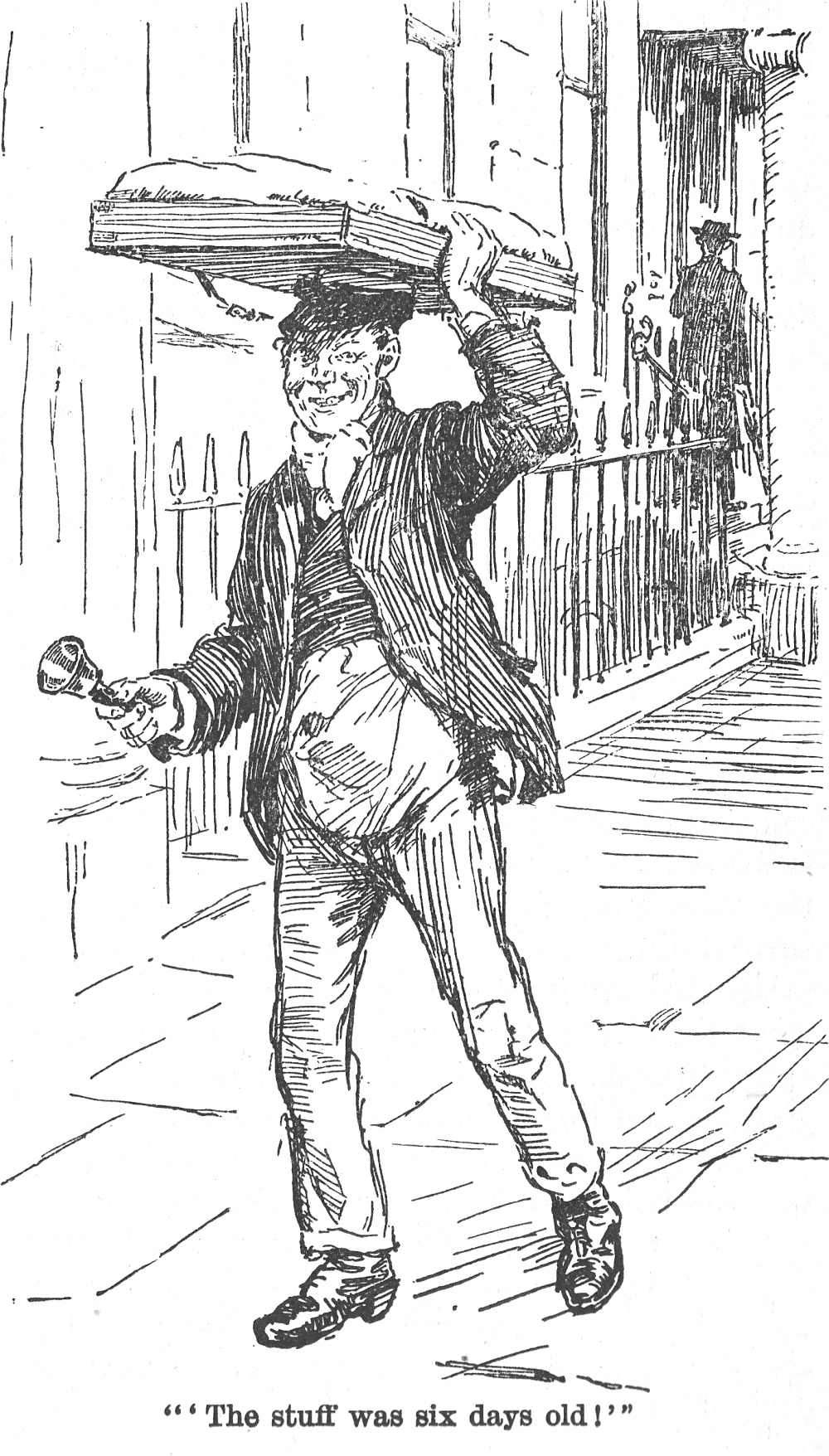

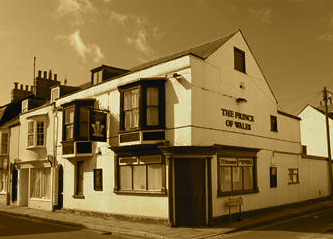
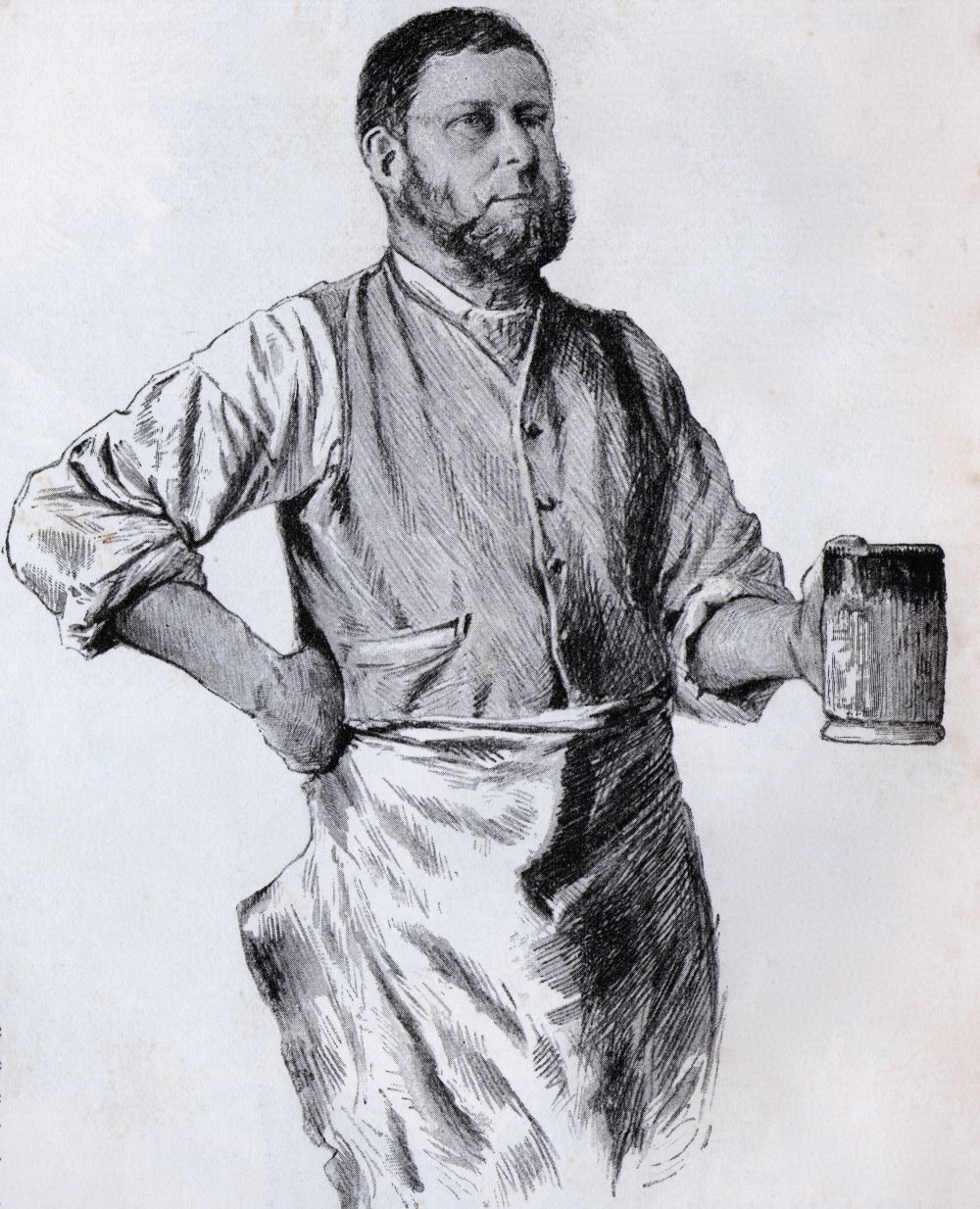


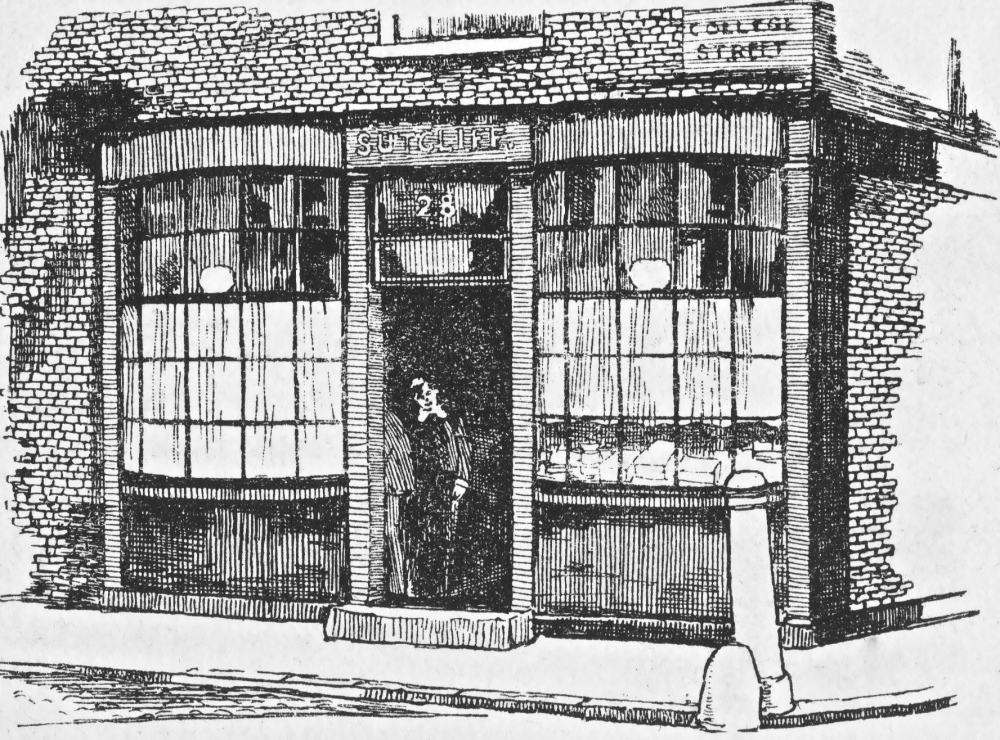




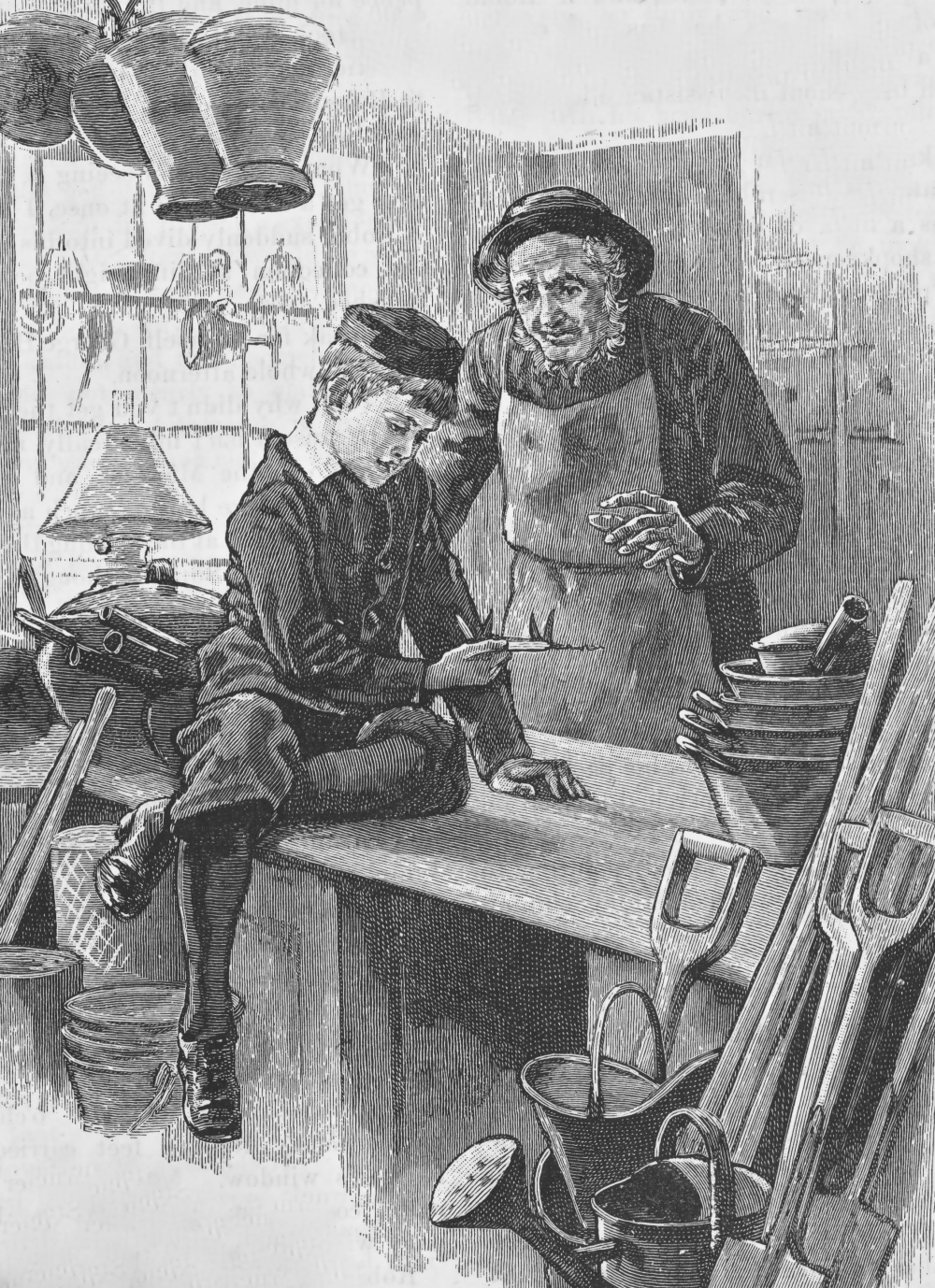

Wow Sue Hobgen that is a lot of information
LikeLike
Hi Sue, This is a lovely read. I would love to talk to you more about Park Street if possible. My family have recently purchased the Duke of Albany pub and it would be great to know more about the history so we can show it off with pictures on the wall. Im not sure if you know of any pictures of the pub? any information, especially victorian, would be great! Hoping to hear from you. 🙂
LikeLike
Hi Kerry
Please send me your email address
I love to send you photos of inside the duke of Albany 1950 and one photo of my grandmother playing the accordion outside the pub standing in half a metre of water because of the floods
LikeLiked by 1 person
Will keep an eye open for you Kerry. Try here perhaps, they might be able to help.
http://www.ifwallscouldtalk.org.uk/
LikeLike
Excellent page with the greatest gratitude thank you. If there is a vintage photo of the building at 30 Park Street, please let me know. I am interested in a short history of dental surgery because it is at this address from the 60’s the previous activity took place in another location this time on the esplanade starting with 1912.
LikeLike
Thank you for your kind comments. I’ll get back to you if I find anything I might think will be of interest to you. Sue
LikeLike
Greetings from the USA. I was thrilled to come across your mention of Meta Weygang and family at 25 Park St. She was my grandmother. I can supply some information if you wish. Many thanks.
LikeLike
Hi William, I’m always pleased to have some more info on these wonderful characters. When writing about them I do wonder what became of them.
LikeLike
My grandmother, Meta Weygang, emigrated to NYC and married William Peter Napier, my grandfather, a New York City policeman. They lived in Bay Ridge, Brooklyn NY, where my father, William Heath Napier, and his brother, John George Napier, grew up. I am William Heath Napier, Jr. and my son is William Heath Napier III. Meta died when I was very young, around the year 1960. My grandfather died in 1939 when my father was only 13 years old. They had a total of six grandchildren of which I am one.
LikeLike
Thank you for the fascinating family story William, I wonder what made your grandmother Meta move to New York? did you ever have any photos of your grandmother?
LikeLiked by 1 person
Hello sue I love Weymouth and I love your posts. I live in Frome but visit frequently. I wrote a book called The Historic Inns of Frome some years ago and did a lot of research for one on Weymouth but my health is not good and I will not be able to finish it.I need to pass the research on to someone who can use it.. fancy a collaboration? I can send what I have via We Transfer if you like please let me know,
mick
LikeLike
Hi Mick, think we’ve been in touch with each other recently?
LikeLike
Am attempting to do a family tree and read with interest your article on Park Street history. Have heard there was once a Bazell’s Lane in the town (near Rodwell?). Can you confirm? Kind regards, David
LikeLike
Hi David, I’ve never heard of it myself but I can certainly find out. Sue
LikeLike
Yes we do have photos of my grandmother, Meta (Weygang) Napier, but no insight as to why the family split, why she came to the States, or why her brother George and Father William moved to Australia. We also have no information about her mother, Louisa Maria (Shoobert) Weygang.
LikeLike
What a great find for me.My Grandmother lived at number 33 Park Street Weymouth and until her death in 1968 she still had a penny gas meter and old fashioned gas lights but quite romantic in its way. She may well have been the last person in Dorset to have had gas lighting. She was terrified of the new fangled electricity and would not have it installed.The old toilet was a noisy contraption that if used at night would wake up the whole household from their deep sleep. The name on the cistern was Thomas Crapper. Happy memories.
Peter Starr
LikeLike
Hi Peter, what fantastic memories you must have. Amazing to think that it was still possible to even have gas lighting in the 1960’s.
LikeLike
Hi Sue, thanks for your comment. Yes. memory is a wonderful thing but my long term term is almost photographic. Short term is not quite so good nowadays.I am glad I discovered your site and look forward to updates. When I was 6 years old and living in Wyke Regis I and my mother saw the Ritz Theatre burned to the ground.I read that a blowtorch started the fire and spread very quickly and gutted the whole building.
I was terribly upset when I read your story about the little four year old boy who had in legs severed by a train. That really upset for a few minutes. God rest his soul and I hope he is in a better place. The agony that little creature must have suffered is beyond words. I can still hear in my ear the peal of the bells in the church in Park Street now demolished. When was it knocked down I wonder, one would guess in the eighties.
Best wishes and look forward to your newsletters.I imagine you must know Stuart Morris from Portland the local historian. One last question for you, how old are the oldest houses in Park Street. I thought they may go back to the late 1700s.
Peter Starr
LikeLike
Hi Sue, thanks for your comment. Yes. memory is a wonderful thing but my long term memory is almost photographic. Short term is not quite so good nowadays.I am glad I discovered your site and look forward to updates. When I was 6 years old and living in Wyke Regis I and my mother saw the Ritz Theatre burned to the ground.I read that a blowtorch started the fire and spread very quickly and gutted the whole building.
I was terribly upset when I read your story about the little four year old boy who had in legs severed by a train. That really upset for a few minutes. God rest his soul and I hope he is in a better place. The agony that little creature must have suffered is beyond words. I can still hear in my ear the peal of the bells in the church in Park Street now demolished. When was it knocked down I wonder, one would guess in the eighties.
Best wishes and look forward to your newsletters.I imagine you must know Stuart Morris from Portland the local historian. One last question for you, how old are the oldest houses in Park Street. I thought they may go back to the late 1700s.
Peter Starr
LikeLike